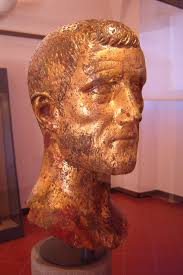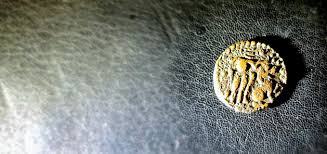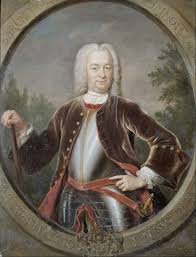-
(Prior year 100 BCE) The first traces

The early origins of the Sri Lankan Coconut
Literary evidence in the Ramayana and the Sri Lanka chronicles indicate that coconuts, scientifically known as Cocos Nucifera, have been in existence in the coastal regions of Sri Lanka (Ceylon) before the 1st century BCE.
-
(270AD) The “Taprobane” period

The Roman reference of the Sri Lankan coconut
Coconut plantations have an esteemed history in Sri Lanka. In the second century AD, the Roman emperor Aurelian wrote in great admiration about “Trapobane’s” palm-groves, and how they were “planted with wonderful regularity all in a row.” Taprobane is what the ancient Greeks called Sri Lanka.
-
(15th & 16th century AD) King Parakramabahu VI reign

The middle age period of the Sri Lankan coconut
Coconut plantations flourished in the Sri Lankan coasts from Chilaw to Matara in the post-Anuradhapura period. In the 15th century, King Parakramabahu VI gifted a coconut plantation to the Thotagamuwe Vijayaba Pirivena. The name coconut was coined by Spanish and Portuguese explorers in the 16th century. When these explorers discovered the fruit growing on the island, they described the outer layer of the coconut, the shell, as a coco, or "grinning face" of a monkey because of its 3 dark holes at its base. From then on, it was referred to as the "coconut".
-
(1500 AD - 1750 AD) The early colonial period

The portuguese influence on the Sri Lankan coconut
At the start of the colonial era, although the Portuguese had an interest in arrack, which is a local alcohol fermented from coconut flower sap, they did not have an interest in other palm products. Therefore, they neglected coconut estates. This situation changed in the 1730s when Governor Gustaaf Willem Baron van Imhoff, who represented the Dutch East India Company sought to improve the nation’s agricultural output. He set out to increase the sales of the Dutch East India Company and thus promoted coconut plantations. One of his initiatives included giving out the land between Colombo and Kalutara to those who were interested in planting coconut trees. However, in the 1750s, the Dutch East India Company halted this initiative, arguing that it conflicted with cinnamon production.
-
(1750 AD - 1850 AD) The local only story

The continued expansion of coconut plantations in Sri Lanka
Sri Lankans however continued to breed coconut plantations and used inland bodies of water to propagate coconuts around the island. The Sri Lankan Coconut Triangle, located between Kurunegala, Puttalam, and Negombo, offered the most ideal soil and climatic conditions for nutrient-rich coconut growing.
-
(Year 1850 - 1925) The export origin

The start of the manufacturing and Sri Lankan coconut export industry
The consumption of coconut palm products in Sri Lanka was largely by locals up until the late 1800s. Although the British colonialists enjoyed toddy (a pre-distilled version of arrack), they were not famous early on in the colonial period for using coconuts for edible uses. However, from the latter half of the 1800s, they began exporting coconut products such as desiccated coconut, coconut oil, and coconut fiber. The pioneers of the desiccated coconut export trade are Henry Vasseur, the entrepreneur, and P.V. Appleby, the engineer. Desiccated coconut was first exported from Sri Lanka in 1891 and the total exported amount for that year was 189 metric tons. By 1911, that number reached 14,493 metric tons. Desiccated coconut’s demand especially from the candy industries in the United Kingdom, United States, and Western Europe began to boom in the early 1900s. The first Sri Lankan to start desiccated coconut production was John Clovis de Silva, a planter and chief partner of J.C. de Silva & Co.
-
(Year 1927 - 2019) The newcomers

After 1927, Sri Lanka lost its “sole supplier to the world” status
Sri Lanka had a virtual monopoly of the coconut trade until the Philippines entered the scene in 1927. Throughout the 1900s, there were several other coconut producing nations that entered the trade. Today, the three largest exporters of coconut products are Indonesia, the Philippines, and Sri Lanka.
-
(Year 2020) “Jewel of the Tropics”

The economic and social importance of coconuts to the modern day Sri Lanka
The coconut is referred to as the “jewel of the tropics,” playing both a large role in a Sri Lankan’s daily diet (15% of the average caloric intake) as well as in the export processing industry of the country. The tree is known as the “tree of life” for its versatility. The coconut meat, the white portion of the nut, is used to produce desiccated coconut, coconut oil, and coconut milk. The shell, husk, and fronds are used to produce activated carbon, coir ropes, fertilizer, and insulation complements. The flower is used to obtain coconut sap meerah which is then dried and crystalized to obtain coconut sugar. Even the roots of the coconut trees are boiled to obtain a dye.
-
(Post 2020) The current economic value

The current value of the Sri Lankan coconut industry
In 2020, the export value of the Sri Lanka coconut industry was USD650M, with 2700M nuts produced locally. In 2021, the export value grew to USD 835M, with 3300M nuts produced locally.




